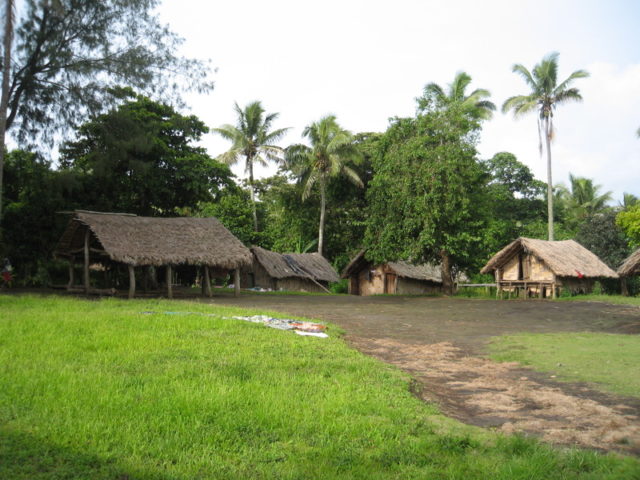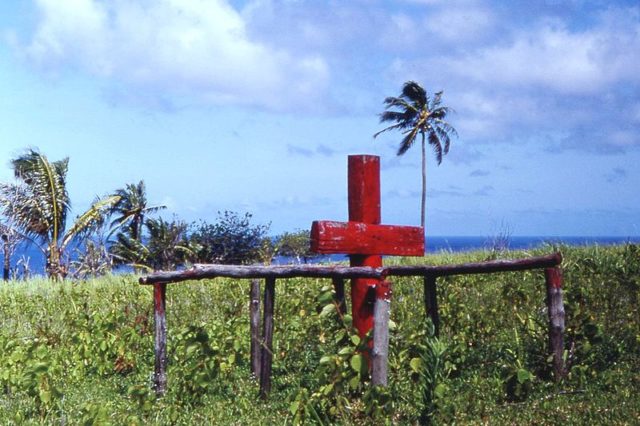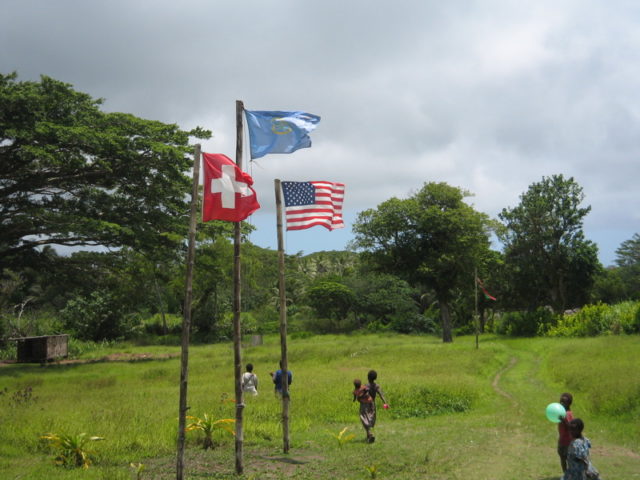On February 15th every year, a group of people on the island of Tanna pay tribute to a divine spirit that is “more powerful than Jesus”. That figure is John Frum.
John Frum (AKA: John Brum, Jon Frum or John From) is often shown as an American WWII soldier, sometimes portrayed as black and sometimes as white. He is said to bring wealth and prosperity to the islanders who follow him.
Quoting David Attenborough’s report of an encounter with an islander, “’E look like you. ‘E got white face. ‘E tall man. ‘E live long South America.”

The religion focusing of John Frum came about in the 1930s, when Vanuatu was known as the New Hebrides, but there was also a claim in 1949 that the religion started in the 1910s. The worship of Keraperamun, a god associated with Mount Tukosmera, was what heavily influenced the movement. In several versions of the story, Manehivi, who was a native man using the alias John Frum, began showing up around the natives of Tanna dressed in what they called a Western-style coat and telling them that he would deliver to them food, clothing, houses and transport. Some others say that Frum was a kava-induced spirit vision.
John Frum was said to be a manifestation of Keraperamun that promised the dawn of a new age in which all white people would leave the New Hebrides, leaving behind all their worldly goods and property for the native Melanesians. But for this to transpire, the people of Tanna had to reject pretty much every aspect of European society, including money, Western education, Christianity, and working on the copra plantations. They also had to return to their traditional customs.

In 1941, John Frum’s followers gave up their money in a whirlwind of spending, leaving the missionary churches, schools, villages, and plantations and they moving inland to start participating in their traditional feasts, dances, and rituals. Colonial authorities wanted to suppress the movement, at one point arresting a Tannese man who was calling himself John Frum, making a point to humiliate him publicly. He was imprisoned and eventually exiled, along with other leaders of the cult, to another nearby island.
Even after this effort, the movement gained more popularity in the 1940s, when around 300,000 troops were stationed in New Hebrides during WWII. With the troops came an enormous amount of supplies. When the Americans departed after the war, followers of John Frum built symbolic landing strips to encourage American planes to land and bring them supplies. Some parts of the cult that put emphasis on the American connection interpret “John Frum” as a corruption of “John from (America)” (though it could be John from anywhere), and they credit the presence of African American soldiers for the idea that Jon Frum was black.
Nakomaha, a leader of the John Frum movement, made the “Tanna Army” in 1957, a non-violent, ritualistic society that organised military-style parades of men that had their faces painted with colors and that wore white T-shirts with the letters “T-A USA” (Tanna Army USA). “John Frum Day” is observed on February 15th every year with a parade, the day which followers believe is when John Frum will return.

Frum’s followers opposed the creation of an independent, united nation of Vanuatu in the late 1970s. They openly objected to a centralised government they feared would favor Western modernity and Christianity that would harmful to local customs. The Frum movement has their own political party led by Song Keaspai.
February 15th, 2007, the party celebrated its’ 50th anniversary. It’s leader, Chief Isaak Wan Nikiau, said to the BBC that John Frum was “our God, our Jesus,” and would eventually return. Radio New Zealand International reported in December 2011 that the “president” of the John Frum movement (and jointly Nagriamel) was Thitam Goiset, the sister of businessman Dinh Van Than and a woman of Vietnamese origin, even though most leaders of the movement had previously been men. In 2013, Thitam Goiset was fired from her role as Vanuatu’s ambassador to Russia amid evidence of corruption.
